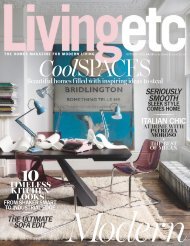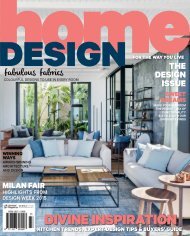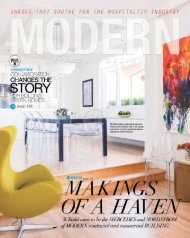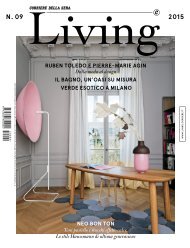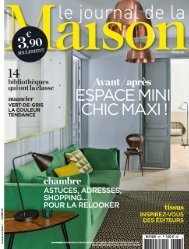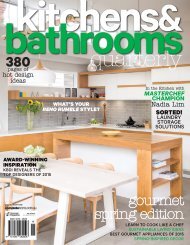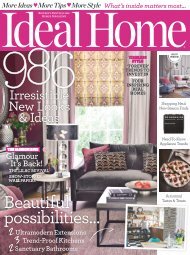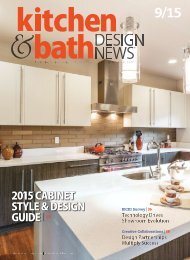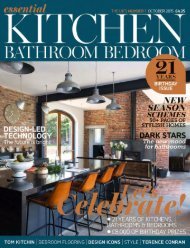DesignBuyBuild_16_2015
Create successful ePaper yourself
Turn your PDF publications into a flip-book with our unique Google optimized e-Paper software.
Art For Art’s Sake?<br />
It started with stainless steel light switches and before<br />
you could say “form and function”, premium electrical<br />
accessories were featuring in schemes like the international<br />
Red Dot design awards. Were they any better than their<br />
predecessors, or was it just art for art’s sake? Probably the<br />
latter, but they looked good on the wall.<br />
Meanwhile in the mass market, the pressure on prices was<br />
leading us down the path of bulk offshore manufacturing, with<br />
fractions of pennies shaved of the unit price by minimising<br />
tooling and materials costs. So, even when the industry<br />
was really bringing exciting technical and energy saving<br />
innovations like low-cost LED lighting to you, not just<br />
cosmetic improvements, the irony was that they often look<br />
exactly the same as their predecessors because re-tooling was<br />
too expensive in a price-led market. All too often, that fractionof-a-penny<br />
pinching extends to componentry and, at the end of<br />
the day product quality and reliability.<br />
At Timeguard we have always traded on superior branded<br />
quality and a few years ago we decided to buck the trend and to<br />
reinforce our investment in superior componentry with superior<br />
designs: better performance AND better looks. In all honesty,<br />
we (and probably most other manufacturers) were accelerated<br />
along that road by the latest generation of designers to our<br />
R&D teams – this new generation has been reared on the likes<br />
of Apple, Ikea and Zara Home, and take good product design in<br />
every aspect of life for granted.<br />
The evolutionary design of our electronic Programastat wall<br />
thermostats and heating controllers marked a watershed in<br />
our approach, but the real revolution was our approach to<br />
outdoor LED lighting. We simply could not see the point of<br />
the industry presenting what was revolutionary technology that<br />
looked like the dinosaurs it was replacing. So we gave our<br />
London-based designer free rein to tear up the rule book – but<br />
with one key proviso. We did not want design for design’s<br />
sake: each design feature had to have a function.<br />
Conversely, each new function we were adding provided a<br />
design opportunity: so essential cooling fins (missing from<br />
cheaper products!), became rows of pins making up featured<br />
metallic backs of new design LED lights. The need to diffuse<br />
LED beams for courtesy lighting and expand the beam for<br />
effective security became diode arrays and reflector plates.<br />
Thus we achieved the magic trick of keeping both the engineers<br />
and the product designers happy at the same time – no mean<br />
feat, I can assure you. More importantly, this approach helps<br />
us – and you – to visually communicate the benefits and value<br />
of the energy saving technology you are offering to your<br />
customers.<br />
You cannot make a silk purse out of a sow’s ear – you’ll get<br />
caught out soon enough. So, it stands to reason, design with<br />
assured, branded quality are the true artform for today’s market.<br />
www.timeguard.com<br />
106



